Understanding Dysgraphia: Insights and Strategies
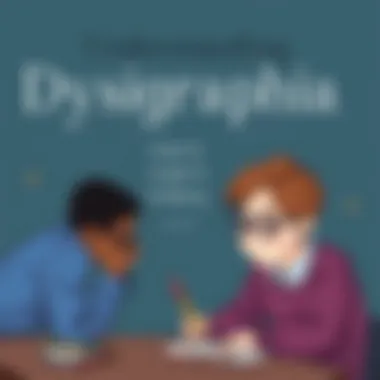
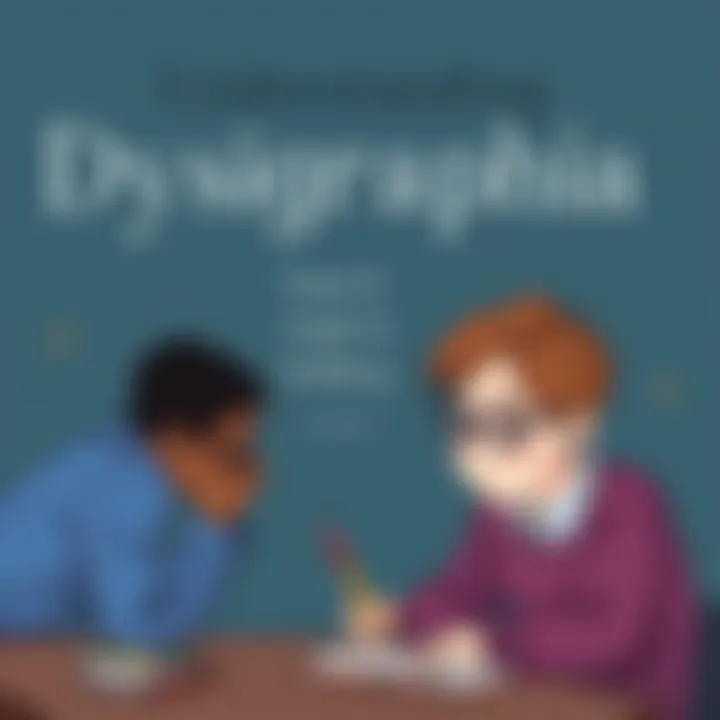
Intro
Dysgraphia is more than just an obstacle in the journey of learning; it’s a unique challenge that shapes how children express themselves on paper. This condition often emerges in early school years, casting a long shadow over their writing skills. To many, the task of putting thoughts into written words can feel like trying to catch smoke with bare hands. For parents and educators, understanding dysgraphia is vital, as it informs how to support those affected in kind and effective ways.
Through this comprehensive exploration, we’ll peel back the layers of dysgraphia. We’ll look into its definition, consider the cognitive processes necessary for writing, and reveal how it influences the emotional and social aspects of a child’s life. It’s important for everyone—parents, teachers, and even the children themselves—to grasp not just the what, but the why and how of this complex condition.
Imagine a child who has brilliant ideas but struggles to translate them into written form. They may feel frustration and defeat, leading to a lack of confidence. This article will present strategies to navigate through these challenges, emphasizing both support methods and creative interventions that aim to foster a more inclusive environment for learners with dysgraphia.
By the end of our exploration, you will not only have a thorough understanding of dysgraphia but also an array of practical tools at your disposal to help those affected thrive.
Defining Dysgraphia
Understanding dysgraphia is key to shedding light on the complex nature of learning disabilities, particularly those that involve writing. In this section, we will explore the essence of dysgraphia, outlining its fundamental characteristics and context. This will lay the groundwork for delving into the various types and interventions available. Knowing about dysgraphia is not just for educators or specialists; it's crucial knowledge for parents and caregivers supporting children who grapple with this challenge.
What is Dysgraphia?
Dysgraphia isn’t just a fancy term thrown around in special education circles. It refers to a specific learning difficulty that affects a person’s ability to write, not because they can’t think of what to say, but primarily due to the mechanical process of writing itself. For individuals with dysgraphia, penning down thoughts can be a painstaking task, often marked by poor handwriting, inconsistent spacing, and a lack of clarity in written expression.
- Symptoms of Dysgraphia include:
- Illegible handwriting.
- Inability to write quickly.
- Difficulty organizing thoughts on paper.
- Problems with grammar or punctuation.
This condition can show itself in various ways, depending on the age of the child and the severity of their symptoms. For young children, this might manifest as a struggle with basic letter formation, while older children may find it hard to express their ideas coherently on paper. Essentially, dysgraphia is more than just bad handwriting; it's about how the brain processes and communicates thoughts through writing.
Historical Background of Dysgraphia
The story of dysgraphia doesn’t start with modern educational psychology; it’s woven into the fabric of understanding learning disabilities over the years. Historically, dysgraphia has often been overshadowed by more widely recognized learning disabilities, like dyslexia.
The term itself began gaining traction in the 1980s when researchers started systematically categorizing different types of learning disorders. As a result, understanding of dysgraphia has evolved significantly, making it a legitimate area of focus in both education and psychological research.
- In the early days, educators looked at writing difficulties as simply a lack of effort or practice. However, with emerging research, there is now a recognized need for tailored approaches to address these challenges.
- Studies have shown that writing difficulties can arise from a mix of neurological, cognitive, and developmental factors.
The recognition of dysgraphia’s impact on educational achievement has put it increasingly in the spotlight. As the conversation continues to shift towards understanding varied learning needs, dysgraphia is finally getting the attention it deserves. There's a growing community advocating for awareness, diagnosis, and intervention, helping kids with dysgraphia navigate their educational paths more effectively.
"Understanding dysgraphia is essential not just for identifying students who face challenges, but also for building strategies that can bolster their educational experiences."
Arming ourselves with knowledge about dysgraphia can lead to more empathetic educational environments, enable effective teaching strategies, and allow parents and caregivers to provide more robust support for their children. This clear and vivid exploration into what dysgraphia is and where it comes from forms the bedrock for the detailed discussions that will follow.
Types of Dysgraphia
Understanding the different types of dysgraphia is crucial for parents, educators, and those who interact with children experiencing writing challenges. Each type has its distinct characteristics and implications for intervention strategies. Not only does this knowledge help in identifying specific needs, but it also allows for tailored approaches that could make a substantial difference in the lives of individuals affected by this condition. Recognizing the nuances is like having a map; it guides the journey towards appropriate support and understanding.
Developmental Dysgraphia
Developmental dysgraphia is primarily related to the challenges children face when learning to write. Unlike other forms, this type often stems from neurological differences that interfere with the fine motor skills required for writing. Children with developmental dysgraphia may grapple with letter formation, spacing, and the physical act of writing. It’s important to note that this isn’t a reflection of a child’s intelligence but rather a manifestation of their learning processes.
Common signs include:
- Inconsistent letter sizes: Letters might be disproportionately large or small.
- Poor spatial awareness: The child may not place letters correctly on the line, leading to cluttered or sprawling sentences.
- Difficulty with pencil grip: Many children struggle to hold the writing instrument properly, which can further hinder their ability to write effectively.
Neuroscientific studies indicate that children with developmental dysgraphia tend to experience variations in brain function. Insights into these neurological factors can assist in crafting interventions that cater specifically to their needs. Implementing multisensory approaches, where children engage in writing activities through touch and sight, can be particularly beneficial in helping them improve.
"Addressing developmental dysgraphia early can pave the way for children to express themselves more confidently and legibly."
Acquired Dysgraphia
On the other hand, acquired dysgraphia occurs when an individual who once had normal writing skills suddenly loses that ability due to a neurological event, such as a stroke or traumatic brain injury. This form of dysgraphia may bring about challenges related to language processing and motor planning, making it deeply frustrating for those affected.
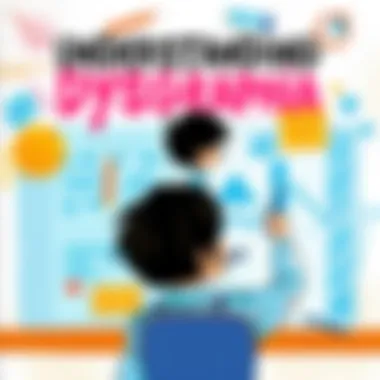
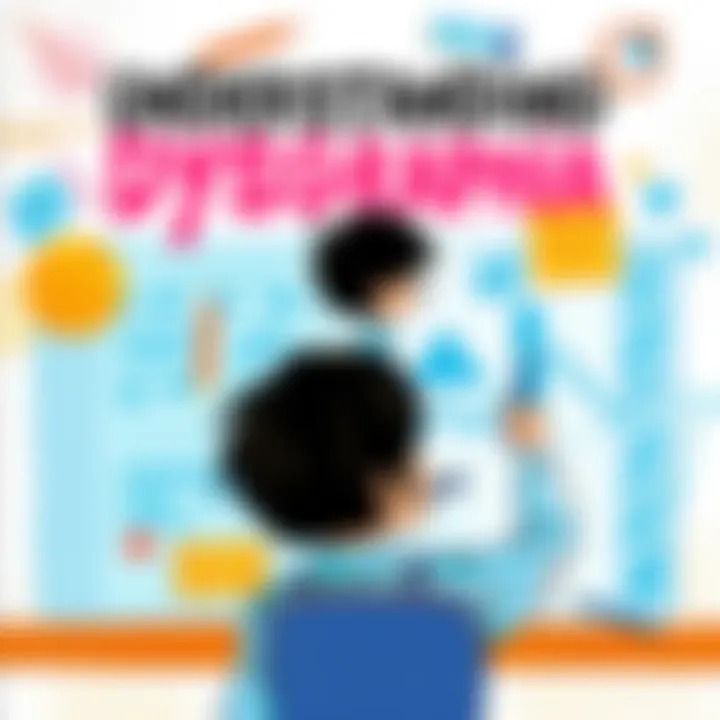
Characteristics of acquired dysgraphia often include:
- Slurred or illegible writing: Affected individuals might produce handwriting that is difficult to read.
- Frequent spelling errors: Issues with spelling can become pronounced, even for words previously mastered.
- Disorganized thoughts: Structuring written work can become a daunting task, where ideas may feel scattered.
The transition from proficient writing to experiencing difficulties can be disheartening. Rehabilitation strategies often require a multi-faceted approach, incorporating not just writing practice but also speech therapy and cognitive exercises. The goal is to retrain the individual’s brain pathways to regain their writing skills.
Understanding these two types of dysgraphia allows for better recognition and intervention strategies tailored to individuals' unique needs, fostering an environment where they can thrive.
Identifying Dysgraphia
Recognizing and understanding dysgraphia is crucial for effectively supporting those affected. This section focuses on the importance of identifying dysgraphia early on, which can greatly enhance the chances of success in managing the condition. Quick identification allows for timely intervention, which can mitigate the struggles individuals face in academic settings and everyday tasks. If we don’t catch it early, we risk letting students fall behind, potentially impacting their self-esteem and social relationships.
Common Symptoms
Identifying dysgraphia involves looking for specific signs. Here are some of the most common symptoms:
- Poor handwriting: Letters may be formed poorly or inconsistently. You might notice an unusual grip on the pencil or crayon, causing tension in the hands. It may look a bit messy, like doodles, rather than finished work.
- Difficulty with spelling: Individuals may have an ongoing struggle with spelling, which often contributes to their overall difficulties with writing. They might frequently misspell simple words or avoid writing as a result.
- Trouble organizing thoughts: This can manifest in written assignments where the individual has a hard time expressing their ideas clearly. Their writing may appear disorganized, jumping from one topic to another without coherence.
- Slow writing speed: Children and adults with dysgraphia usually take longer to complete writing tasks compared to their peers. It’s not just about being slow—it's about the effort it takes to get words on the paper.
- Inconsistent letter size and spacing: The size of letters may vary from one to another, and spaces between words may be larger or smaller than usual. This inconsistency can create a confusing visual when looking at their writing.
It’s also worth noting that while these symptoms are commonly associated with dysgraphia, they can also be observed in other learning disorders. Therefore, it’s important to look at the bigger picture, considering a combination of signs and the impact on the person's daily functioning.
Assessment Tools and Techniques
To pinpoint dysgraphia, professionals utilize various assessment tools and techniques. These approaches help capture a comprehensive view of the individual's writing capabilities and challenges. Here are a few:
- Standardized tests: Assessment tools like the Test of Written Language (TOWL) can help evaluate overall writing skills, covering aspects of grammar, mechanics, and composition.
- Observational checklists: Educators often use checklists to identify writing behaviors in the classroom. This includes noting how students write in real-time during activities.
- Writing samples: Collecting samples of a child's writing over time can give insight into their progress. It allows for a side-by-side comparison of their abilities at different stages.
- Interviews: Talking with parents, teachers, and the individuals themselves can provide a clearer background and help identify the extent of the challenges faced.
Insight: Identifying dysgraphia early can significantly change a student's academic trajectory by ensuring appropriate support and strategies are put in place in a timely manner.
Cognitive Underpinnings of Dysgraphia
Understanding the cognitive underpinnings of dysgraphia is crucial, as it helps illuminate the brain's role in this specific learning disability. Dysgraphia isn’t just about poor handwriting; it reflects deeper cognitive challenges that impact a person's writing processes and skills. By grasping these underpinnings, educators, parents, and caregivers can offer more targeted support to those affected.
Neurological Factors
Dysgraphia is often linked to neurological factors that create barriers in the brain's ability to translate thoughts into written text. Research suggests that regions responsible for motor skills and language processing, particularly in the left hemisphere, may function differently in individuals with dysgraphia.
These differences can manifest in several ways:
- Motor Coordination Issues: Many individuals with dysgraphia have trouble with fine motor skills, which makes writing laborious. For example, they might struggle to grip a pencil or form letters accurately.
- Language Processing Delays: There may be delays in processing language, which affects the ability to articulate thoughts in writing. This is often noticeable in sentence structure and vocabulary use.
- Visual-Spatial Processing Challenges: Some young learners find it tough to organize their thoughts on paper. That's because they might struggle with visualizing how to layout text or align letters.
Exploring these factors not only aids in identifying dysgraphia, but also provides insights into effective intervention strategies, personalizing the approach for each student.
Impact on Executive Functioning
Executive functioning refers to a set of mental skills that help with tasks like focusing, organizing information, and managing time. For individuals with dysgraphia, these skills can be profoundly affected.
Key impacts include:
- Planning and Organizing: Writing requires the ability to plan and organize ideas effectively. A child with dysgraphia might find it overwhelming to structure an essay, leading to frustration.
- Working Memory Constraints: The challenge of holding onto thoughts while simultaneously writing can lead to a breakdown in communication. When someone is trying to remember a thought and write it down at the same time, they might forget one in the process.
- Self-Monitoring Difficulties: Awareness of their own writing errors is often reduced; thus, they may not catch spelling or grammatical mistakes as easily as their peers without dysgraphia.
A deeper understanding of these cognitive elements enables mentors and caregivers to tailor their strategies, thus fostering an environment where pupils can flourish. As we look to support these students effectively, we must consider that their difficulties are not rooted in a lack of effort but rather in very real cognitive constraints.
"Recognizing the cognitive foundations of dysgraphia paves the way for empathetic and practical support for those navigating its challenges."
Remember that every child's experience with dysgraphia can be unique, so it's essential to approach each scenario with adaptability and care.
Emotional and Social Impacts
Understanding the emotional and social facets of dysgraphia is crucial. It's not just about difficulty in writing; this condition can ripple out into various other aspects of a child's life. Kids who find it tough to express themselves in written form often face challenges that influence their self-image and how they interact with others. When we consider dysgraphia, we must look beyond the act of writing and delve into the deeper emotional currents that run through the lives of those affected.
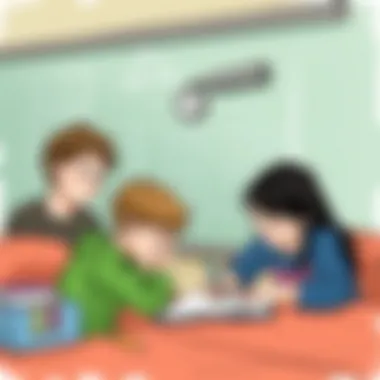
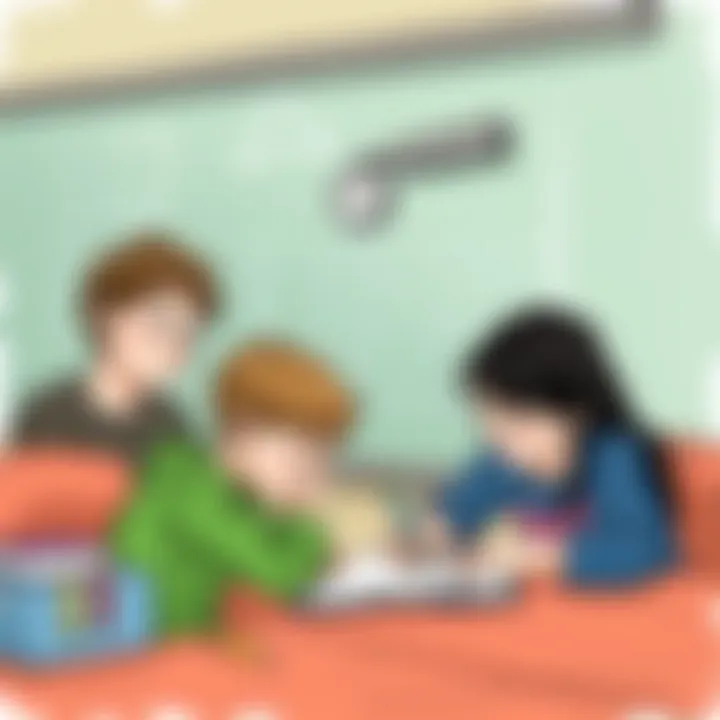
Self-esteem and Confidence Issues
For many children grappling with dysgraphia, the lingering effects on self-esteem can be staggering. Imagine a child who constantly sees themselves falling short in comparison to their peers. This frustration doesn’t just affect their grades but can also diminish their self-worth. When writing tasks heavily rely on legibility and structure, children often become discouraged, leading to a cycle of defeat.
Addressing self-esteem issues is essential. Supportive strategies from parents and teachers can help turn things around. Small wins in writing can replenish confidence. By celebrating progress, no matter how small, caregivers can ignite hope in a child’s heart. It is important to foster an environment that emphasizes effort, rather than purely outcomes.
- Encouragement: Positive reinforcements can act as a lifeline. A simple, "I see how hard you're trying" can work wonders.
- Goal-setting: Setting achievable goals can provide structure and a sense of accomplishment.
- Counseling: Sometimes, professional guidance can help in building resilience and coping strategies.
Social Interaction Challenges
Dysgraphia's implications extend into the social sphere as well. Children with this condition might find it difficult to share thoughts or participate in group activities, especially those involving writing. When kids can't communicate effectively through writing, they often feel isolated, which can hinder their social interactions.
Social skills are paramount during childhood development. When a child chooses to withdraw from group projects or discussions due to fear of being judged or misunderstood, it stunts their ability to form friendships. Some might feel awkward about asking for help or may shy away from participating in class altogether.
To tackle these social interaction challenges, it is essential to create a more inclusive environment. Techniques such as incorporating peer support systems can make a huge difference.
- Buddy systems: Pairing children with supportive peers can help reduce anxiety.
- Interactive activities in classrooms: Group writing exercises can encourage collaboration and lessen the feeling of isolation among those with dysgraphia.
- Open discussions: Encouraging all children, including those with struggles, to share their thoughts fosters empathy and understanding.
Addressing emotional and social impacts is vital in making sure children with dysgraphia feel included and valued. A nurturing environment enables them not merely to survive but thrive amidst their challenges.
In summary, tackling emotional and social impacts stemming from dysgraphia involves awareness, active intervention, and fostering supportive networks. By recognizing these aspects, we can pave the way for better outcomes for those affected.
Intervention Strategies
Addressing dysgraphia effectively requires a variety of intervention strategies, tailored to meet the unique needs of each individual. The significance of these strategies cannot be overstated. They serve not just as a means to improve writing skills but also as a foundation for boosting self-efficacy and social interactions. The right interventions can empower children to express themselves clearly and confidently, which is vital in both educational contexts and day-to-day life.
Educational Accommodations
Educational accommodations are adjustments or modifications made in a learning environment to help students with dysgraphia succeed. These adaptations focus on facilitating the writing process rather than purely emphasizing on penmanship and production speed.
Here are several common types:
- Extended Time on Assignments: Allowing extra time for tests and written tasks can significantly alleviate pressure and enable students to express themselves better.
- Alternative Formats for Responses: Providing options like voice-to-text software or allowing oral presentations can bypass written expression challenges.
- Modified Writing Tools: Using grips, slant boards, or specialized paper can enhance comfort and control, making writing less of a chore and more accessible.
"The right accommodations can bridge gaps that traditional methods often overlook.”
These measures not only create a more inclusive environment but also build confidence. When students do not feel hindered by their writing difficulties, they are freer to learn and engage more fully in their studies.
Therapeutic Approaches
Therapeutic approaches focus on enhancing fine motor skills and cognitive processes involved in writing. These interventions can be facilitated by occupational therapists, who work one-on-one with children to improve their writing abilities.
Some effective therapeutic methods include:
- Fine Motor Skill Development: Engaging in activities like play dough manipulation, scissors practice, and even simple art projects can help strengthen the hand muscles needed for writing.
- Writing Exercises: Using targeted exercises designed to improve grip, letter formation, and overall fluidity can significantly benefit individuals.
- Cognitive Behavioral Techniques: Strategies that address anxiety related to writing can be critical, helping students manage their fears and frustrations.
The aim of these therapeutic strategies is not merely remediation but the whole development of the child’s capabilities. A multifaceted approach paves the way for lasting improvements.
Assistive Technology Solutions
The integration of assistive technology into learning plans for children with dysgraphia can open new doors. Technology can often provide tools that ease the burden of writing and enhance a child's ability to communicate. Here are some noteworthy solutions:
- Speech-to-Text Programs: These tools convert spoken language into written text, enabling children to dictate their thoughts without the struggle of writing.
- Word Prediction Software: Such programs predict what a user is attempting to write, allowing for a smoother composition process and reducing the cognitive load required to spell every word correctly.
- Digital Notebooks and Tablets: These devices can be equipped with apps specifically designed to aid writing, offering apps that provide templates and automatic corrections that can be incredibly beneficial.
By harnessing the power of technology, children can focus more on their ideas and creativity, rather than being bogged down by the mechanics of writing. This shift can fundamentally change their learning experience, allowing them to thrive.
In summary, effective intervention strategies for dysgraphia encompass a blend of educational accommodations, therapeutic support, and technology integration. Such comprehensive strategies not only tackle the writing difficulties associated with dysgraphia but also promote a holistic development approach towards children's educational journeys.
Supporting Individuals with Dysgraphia
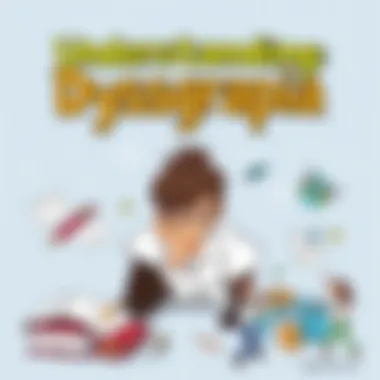
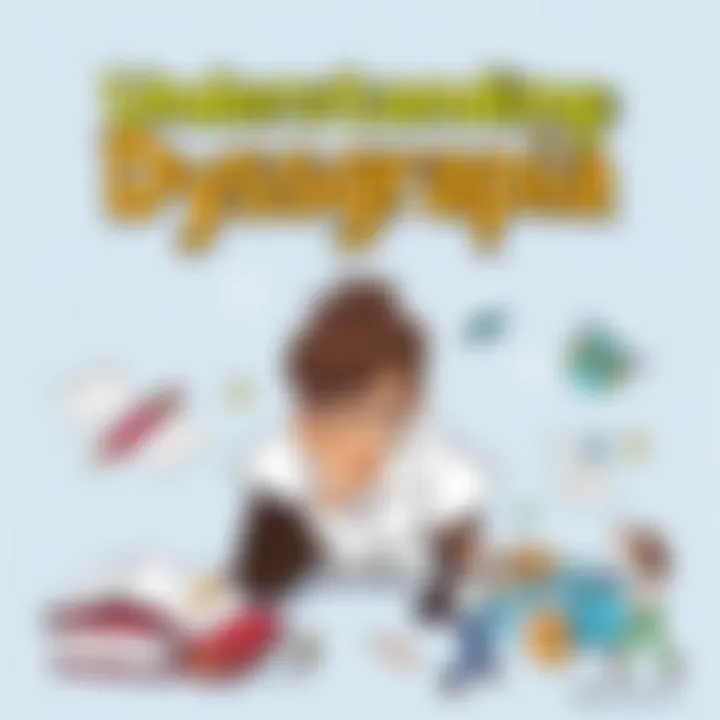
Understanding how to support individuals with dysgraphia is crucial in helping them overcome the challenges associated with this learning disability. The right support allows for better self-expression and a greater chance of academic success. Dysgraphia can lead to feelings of frustration, especially when it comes to writing tasks. With targeted strategies from both parents and educators, individuals can be guided towards heightened confidence and proficiency.
Parental Support Strategies
Parents play a pivotal role in fostering an environment that is both supportive and understanding. Here are some key strategies:
- Encourage Open Communication: Let children express their feelings about writing and school. Understanding their frustrations can help parents tailor support.
- Create a Structured Routine: Consistent routines can provide a sense of security. Set specific times for homework, with breaks included to avoid overwhelm.
- Utilize Multi-Sensory Techniques: Children may benefit from engaging multiple senses during writing practice. For instance, using textured paper or writing in sand can be beneficial.
- Focus on Positivity: Praise efforts instead of perfect outcomes. Highlighting progress can motivate children to keep trying, regardless of imperfections.
- Explore Assistive Tools: Consider incorporating technology, like speech-to-text software, which can ease the writing process and allow for self-expression without the physical strain of writing.
"Support from parents is often the bedrock for success in children facing academic challenges. Every little bit counts."
By implementing these strategies, parents can help their children view dysgraphia not as a barrier, but as an aspect of their uniqueness.
Educator Guidance and Training
Educators are positioned to make a lasting impact in the lives of students with dysgraphia. Their understanding and response can either facilitate growth or hinder learning. Here’s how teachers can enhance their approach:
- Professional Development: Schools should offer training on dysgraphia and related educational strategies, ensuring that all educators are well-equipped to support affected students.
- Individualized Instruction: Tailoring lessons to meet the specific needs of each learner can significantly affect their progress. This could involve modifying assignments or adapting classroom materials.
- Use of Graphic Organizers: Teach students to use graphic organizers to plan their writing. This helps them structure ideas without getting bogged down by the mechanics of writing.
- Provide Alternative Assessment Methods: Allow for assessments to be conducted through verbal responses or projects instead of traditional writing methods. This helps to evaluate knowledge without the added writing pressure.
- Promote Peer Support: Encourage inclusive practices where students help each other. Peer mentoring, especially from those who may have similar challenges, fosters a sense of community.
By recognizing the importance of targeted support and the impact of training for educators, schools can cultivate an environment where students with dysgraphia can thrive academically and socially.
Future Directions in Dysgraphia Research
Research into dysgraphia is still evolving, with new studies regularly surfacing that challenge existing understandings and introduce innovative concepts. This section emphasizes the importance of exploring future directions in dysgraphia research, particularly focusing on emerging studies and potential enhancements in interventions. A fresh look at this area has benefits that reach far beyond academic circles; it can affect how families, educators, and professionals support individuals grappling with this condition.
Emerging Studies and Findings
The landscape of dysgraphia research is rich with emerging studies that not only clarify the mechanisms behind dysgraphia but also broaden the approaches to its management. Recent investigations have revealed the significant role of neurological components — specifically, how impairments in certain brain areas impact writing skills. Behavioral studies have also begun to shed light on how dysgraphia manifests differently across various age groups and educational environments.
For instance, a study conducted at the University of Illinois found that children with dysgraphia often show specific patterns of brain activity when attempting to write, differing markedly from their peers without this condition. This discovery underscores the importance of tailoring educational strategies to fit these distinct neurological profiles. Such insights can lead to targeted therapies that address not just the symptoms but the root causes of difficulties in writing.
Moreover, behavioral and cognitive interventions are being tested with promising outcomes. Programs aiming to improve fine motor skills through art and play have shown that children can make significant strides in their writing capabilities. Specifically, incorporating fun, artistic activities allows kiddos to practice motor control without the pressure of formal exercise, leading to a more engaged learning experience.
"The more we know about dysgraphia, the better we can support those affected by it. Researchers are connecting dots that could change approaches to interventions."
Potential Enhancements in Interventions
As new findings emerge, there's an inevitable push for enhanced interventions that keep pace with the latest understanding of dysgraphia. Current interventions often seem fragmented; what is proving effective for one child may not work for another. However, advancing research suggests a more holistic method, integrating multiple strategies tailored to individual needs.
Here are some promising enhancements that could shape future interventions:
- Personalized Learning Plans: Developing more individualized education plans (IEPs) that account for unique neurological findings can empower teachers to provide bespoke support.
- Technology Integration: The use of assistive technology is on the rise. Tools like speech-to-text software or digital notebooks can alleviate some barriers dysgraphic children face, giving them alternative methods to express their thoughts.
- Parental and Educator Training: Training programs that inform parents and educators about dysgraphia are crucial. Knowledge fosters understanding, ensuring adults can effectively support children facing challenges with writing.
- Collaborative Research: Collaboration between educational institutions and neuroscience research may yield robust frameworks tailored to developing comprehensive intervention strategies. By harnessing interdisciplinary insights, stakeholders can push for systematic changes in curriculum and support.
As research continues to churn out valuable insights, the dysgraphia community must also consider how to implement these findings effectively. Future directions in this field are not merely an academic exercise; they hold real implications for improving lives of individuals who struggle with writing due to this challenging condition.
Overall, keeping an open line of communication among researchers, educators, and families is key to translating theoretical findings into tangible support.
For more connected resources, visit Wikipedia or Britannica for broader insights into the subject.
Culmination
The conclusion of this article reiterates the vital points discussed throughout the exploration of dysgraphia. It emphasizes that understanding this specific learning disability is not merely an academic endeavor but a crucial step toward fostering empathy and support for those affected. Dysgraphia affects not only the individual’s writing but also impacts their self-esteem, social interactions, and cognitive processes. Therefore, educating ourselves about the neurological and emotional aspects of dysgraphia is essential for providing the right kind of assistance.
Summary of Key Insights
In summarizing the key insights, we note that dysgraphia manifests in different forms—developmental and acquired—each presenting unique challenges. Common symptoms include illegible handwriting, difficulty in organizing thoughts on paper, and frustration during writing tasks. The article also discussed assessment tools that can aid in identifying dysgraphia, facilitating timely interventions.
As for intervention strategies, it’s critical that educators and parents work collaboratively. From utilizing educational accommodations to incorporating assistive technology, these strategies can significantly improve the writing abilities of those affected. Notably, it is not just about addressing academic struggles but also about enhancing the emotional well-being and confidence of individuals with dysgraphia.
Encouraging Further Awareness
Encouraging further awareness about dysgraphia is paramount. Greater awareness leads to better understanding and acceptance in educational settings and beyond. Schools and communities need to prioritize training educators to recognize the signs and provide tailored support. Parents can also play a critical role by maintaining open lines of communication with teachers and being proactive in seeking resources.
Moreover, sharing information and personal stories can help demystify dysgraphia; this spreads awareness in circles that might be unfamiliar with the condition. It’s worth exploring discussions in community forums on platforms like Reddit, or visiting sites such as the International Dyslexia Association (idausa.org). Through collective efforts and ongoing education, we can uplift those with dysgraphia, ensuring they receive the understanding and tools needed to thrive in an often challenging world.
"Awareness is the first step in making a change; understanding comes next."
Furthermore, maintaining up-to-date knowledge through ongoing research will ensure that strategies evolve over time, adapting to the changing needs of individuals with dysgraphia, benefitting not just the individuals, but society as a whole.







